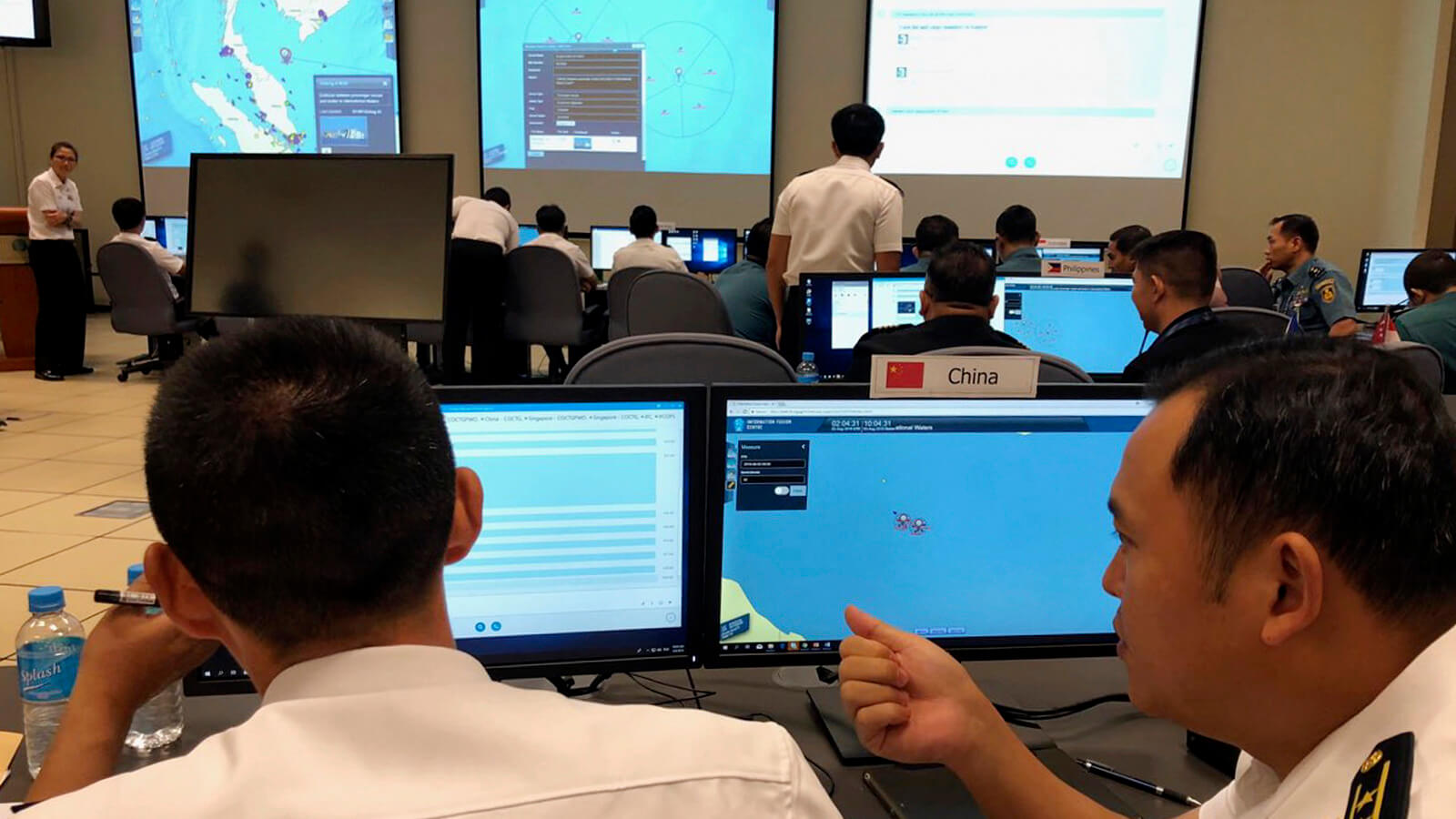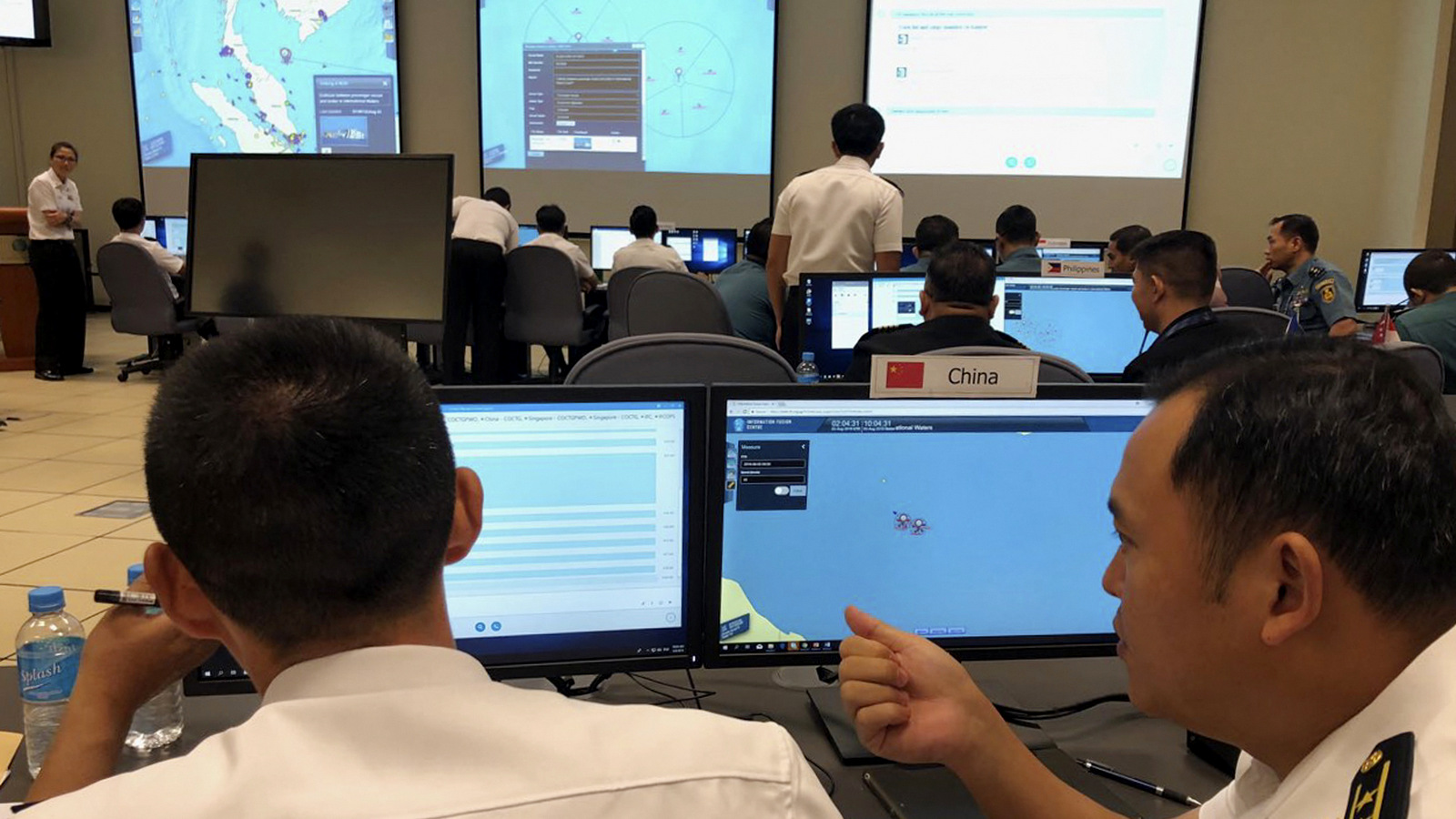SINGAPORE – A decade of often bruising negotiations has led to a new agreement for cooperation, as China and the 10-member Association of Southeast Asian Nations (ASEAN) regional bloc issued a draft document committing to working together, conduct that will govern future talks over the South China Sea.
A 26-page joint communiqué followed a series of meetings in Singapore involving the ASEAN member states plus China and Japan, where the goal of regional economic integration was laid out along with the need for cooperation to weather the potential disruptions posed by high technology.
“We reiterated the priority placed by ASEAN on the RCEP [Regional Comprehensive Economic Partnership] as a centerpiece of its external economic relations, particularly at a time of growing uncertainty in global trade,” the joint statement read. The RCEP is a proposed free-trade agreement between ASEAN and Australia, China, India, Japan, South Korea and New Zealand.
The statement also conveyed the 11 nations’ firm resolve to “fully tap the opportunities afforded by new technologies and innovation arising from the digital revolution”, as well as to remain observant and responsive to emerging threats like ecological degradation, and unconventional security issues such as radicalization, violent extremism, illicit drugs, transnational crime and cybersecurity threats.
Beijing stresses harmful role of “external disturbances”
China and ASEAN will also hold joint military exercises in October as a means to build mutual trust among the states and enhance the cooperation of navies, according to the statement.
In a draft text, Chinese Foreign Minister Wang Yi noted China’s desire that the ASEAN-China Maritime Exercise become a regularly-held event, but that the war games should not involve extra-regional countries “unless the parties concerned are notified beforehand and express no objection.”
The top diplomat for the East Asian powerhouse hailed the agreement as a breakthrough while warning of the danger posed by outside meddlers. “Ruling out external disturbances, the deliberation of the code of conduct will speed up and move forward,” Wang noted.

Chinese navy staff participate in a computer-simulated drill in Singapore, Aug. 3, 2018. Chinese and Southeast Asian naval forces staged their first computer-simulated drills so they can jointly respond to emergencies and build trust amid the long-seething disputes in the South China Sea. Jim Gomez | AP
The foreign minister added that the regional bloc and China have proven their ability to maintain regional stability and peace in the South China Sea while forging an ultimate framework of rules that all countries would observe. Wang said:
It is like China and ASEAN countries building a house together. In the past, there were 11 designs from the 11 countries on what this house would look like. Now we have laid good groundwork for a single design of this house.”
China and the Southeast Asian bloc could also collaborate in joint oil and gas exploration in the waters but foreign firms would be excluded in this respect as well, Beijing suggested in the text.
While China’s allies in ASEAN like Cambodia and Laos have sided with Beijing over the territorial disputes, the Philippines and especially Vietnam have lodged protests against China’s moves to change the reality on the ground.
Hanoi was infuriated by Beijing’s moves to place an oil rig in waters it claimed in 2014, as well as its recent transformation of disputed reefs into fortified man-made islands complete with runways, tunnels, advanced weapons systems and other high-tech infrastructure. The draft document contained Vietnam’s criticisms of China’s construction of artificial islands.
Such differences are unlikely to be resolved overnight, regardless of China’s expressed optimism.
China comes into its own as U.S. goes on the attack
Beijing’s approach appears committed to eroding the regional dominance of the United States. Since the end of the Second World War, the U.S. has been the foremost military power in the Asia-Pacific region. Washington has frequently weighed in against China amid the contention surrounding the South China Sea.
China has long pointed to the U.S. as the main source of regional tensions, accusing the U.S. of meddling in Asian matters through its repeated deployments of warships and jets in the regional waters while attempting to consolidate a new “Indo-Pacific” alliance meant to contain a rising China.

The U.S. Navy’s Ronald Reagan steams alongside Japan’s Izumo destroyer during an exercise off the coast of Japan,near the disputed South China Sea. U.S. Navy Photo
The two are embroiled in a heated trade dispute amid mutual accusations of protectionism and the imposition of tariffs. On Thursday, the U.S. placed new restrictions on 44 Chinese companies it sees as posing a “significant risk” to its national security and foreign policy interests.
In an editorial published Thursday evening in the English-language edition of Global Times, an outlet closely affiliated with the ruling Communist Party of China, the paper urged the Chinese people to maintain a realistic view of the country’s “ability to withstand a comprehensive U.S. trade war.”
Warning against both overconfidence and excessive doubt by public intellectuals, the paper noted:
Under the current circumstances, Beijing has no will to initiate a trade war with Washington, but is forced to fight back strategically. Chinese society has various opinions on the reason why the trade war started, and all these opinions are worth summarizing. However, it needs the solidarity and confidence of all of society to confront U.S. pressure, and fear of the U.S. won’t help.
… Opening up is a must for China, and the struggle against U.S. hegemony during the process is also unavoidable.”
Regional odds increasingly favor Beijing
Southeast Asian elites have expressed doubts over the United States’ ability to retain its regional dominance, especially given the erratic leadership of President Donald Trump and his administration’s stubborn “America First” agenda of reducing trade deficits with other countries by demanding they drop their protectionism. Traditional allies like Indonesia and Japan have balked at the White House’s domineering approach to these talks.
On the other hand, China’s strength is increasingly seen as a new reality that’s here to stay. Businesses across the region have hoped to attract Chinese investments, tempering their unease and opposition to Beijing’s policies.
Earlier this week, U.S. Secretary of State Mike Pompeo announced a $113 million infrastructure fund for Asia-Pacific development as a part of Washington’s Indo-Pacific strategy to counter what it sees as an emerging Chinese leadership role or “dominance” over the region. Pompeo is currently on a tour of Malaysia, Singapore, and Indonesia where he is expected to lay out the White House’s Southeast Asian regional policy.
Given the apparent consensus on the need for regional differences to remain a regional affair that should be sorted out by locals, Pompeo may not receive the acquiescence to U.S. demands or commitment to its flagging hegemony for which he seems to be hoping.
Top Photo | China’s Foreign Minister Wang Yi, right, and Vietnam’s Foreign Minister Pham Binh Minh at a bilateral meeting on the sidelines of the 51st ASEAN Foreign Ministers Meeting in Singapore, Aug. 3, 2018. Joseph Nair | AP
Elliott Gabriel is a former staff writer for teleSUR English and a MintPress News contributor based in Quito, Ecuador. He has taken extensive part in advocacy and organizing in the pro-labor, migrant justice and police accountability movements of Southern California and the state’s Central Coast.
The post US Hegemony Declines As Southeast Asian Nations Pledge Integration With China appeared first on MintPress News.
